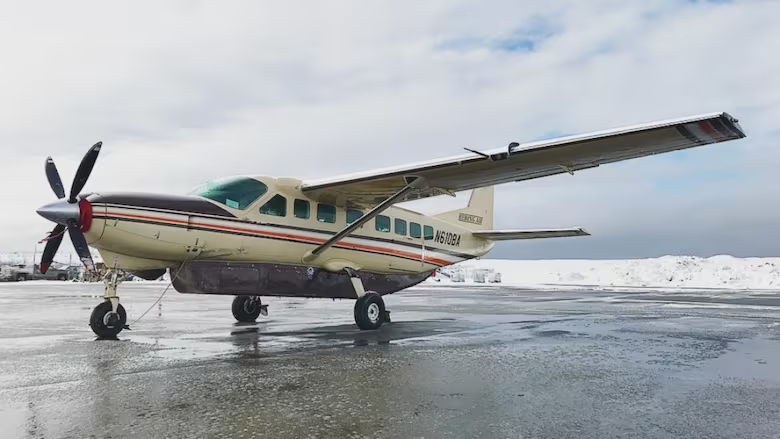JUNEAU, Alaska — A small commuter plane that crashed while en route to Nome in western Alaska was discovered on sea ice, with all 10 people on board confirmed dead, authorities reported.
Mike Salerno, a spokesperson for the U.S. Coast Guard, stated that rescuers spotted the wreckage while searching the aircraft’s last known location via helicopter. Two rescue swimmers were deployed to examine the site.
The aircraft, a single-engine turboprop operated by Bering Air, was carrying nine passengers and a pilot. It departed from Unalakleet on Thursday afternoon, bound for Nome, according to the Alaska Department of Public Safety.
The Cessna Caravan took off at 2:37 p.m., and officials lost contact with it less than an hour later, said David Olson, Bering Air’s director of operations.
At the time, the weather conditions included light snowfall and fog, with a temperature of 17°F (-8.3°C), according to the National Weather Service.
The aircraft disappeared approximately 30 miles (48 kilometers) southeast of Nome and was later found 12 miles (19 kilometers) offshore, the Coast Guard reported.

Radar data provided by the U.S. Civil Air Patrol suggested that at around 3:18 p.m., the plane experienced a sudden drop in altitude and speed due to an unknown event, said Coast Guard Lt. Cmdr. Benjamin McIntyre-Coble. However, he declined to speculate on the possible cause.
McIntyre-Coble also noted that no distress signals were received from the aircraft.
Planes are typically equipped with emergency locator transmitters, which, if exposed to seawater, send distress signals via satellite to alert the Coast Guard. However, no such signals were detected.
All 10 individuals on board were adults, and the flight was part of Bering Air’s regular commuter service, said Lt. Ben Endres of the Alaska State Troopers.
Search efforts involved local, state, and federal agencies, covering vast areas of ice-dotted waters and frozen tundra.
The crash marks the third major aviation accident in the U.S. within just eight days. On January 29, a commercial jetliner collided with an Army helicopter near Washington, D.C., resulting in 67 fatalities.
Two days later, on January 31, a medical transport plane crashed in Philadelphia, killing all six people on board as well as one person on the ground.
In Alaska, many communities are not connected by road, making air travel a necessity, especially in winter.
The region frequently experiences sudden snow squalls and strong winds, further complicating flights.
Bering Air operates in 32 remote villages across western Alaska, with hubs in Nome, Kotzebue, and Unalakleet. Most destinations receive twice-daily scheduled flights from Monday to Saturday.
On Friday morning, flight tracking service Flightradar24 showed two Bering Air planes searching in a grid pattern near the coastline.
Unalakleet, a village of approximately 690 residents, is located 150 miles (240 kilometers) southeast of Nome and 395 miles (640 kilometers) northwest of Anchorage.
The village is a key checkpoint along the famous Iditarod sled dog race route, which traverses the frozen Norton Sound.
Nome, historically known as a Gold Rush town, sits just south of the Arctic Circle and serves as the endpoint of the 1,000-mile (1,610-kilometer) Iditarod race.
The city announced that prayer vigils would be held on Friday for the victims, their loved ones, and those involved in the rescue efforts.
Alaska’s U.S. senators, Lisa Murkowski and Dan Sullivan, expressed condolences for the victims and their families, as well as gratitude to the search teams.
Meanwhile, U.S. Rep. Nick Begich stated on social media that he was ready to assist the Nome community and Alaska Governor Mike Dunleavy in any way possible.
